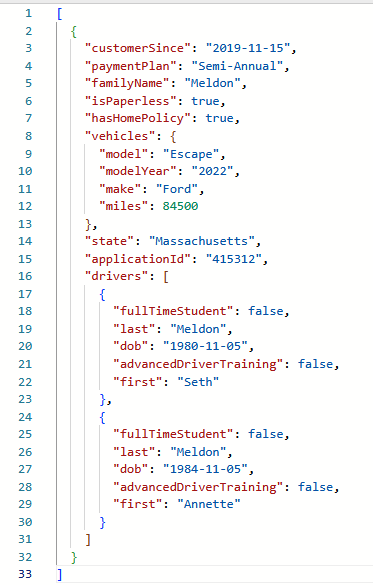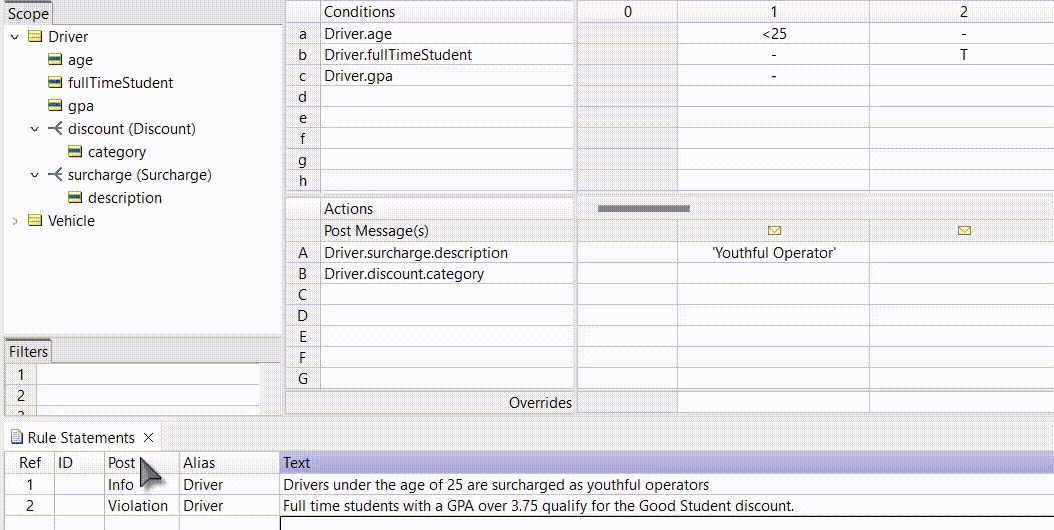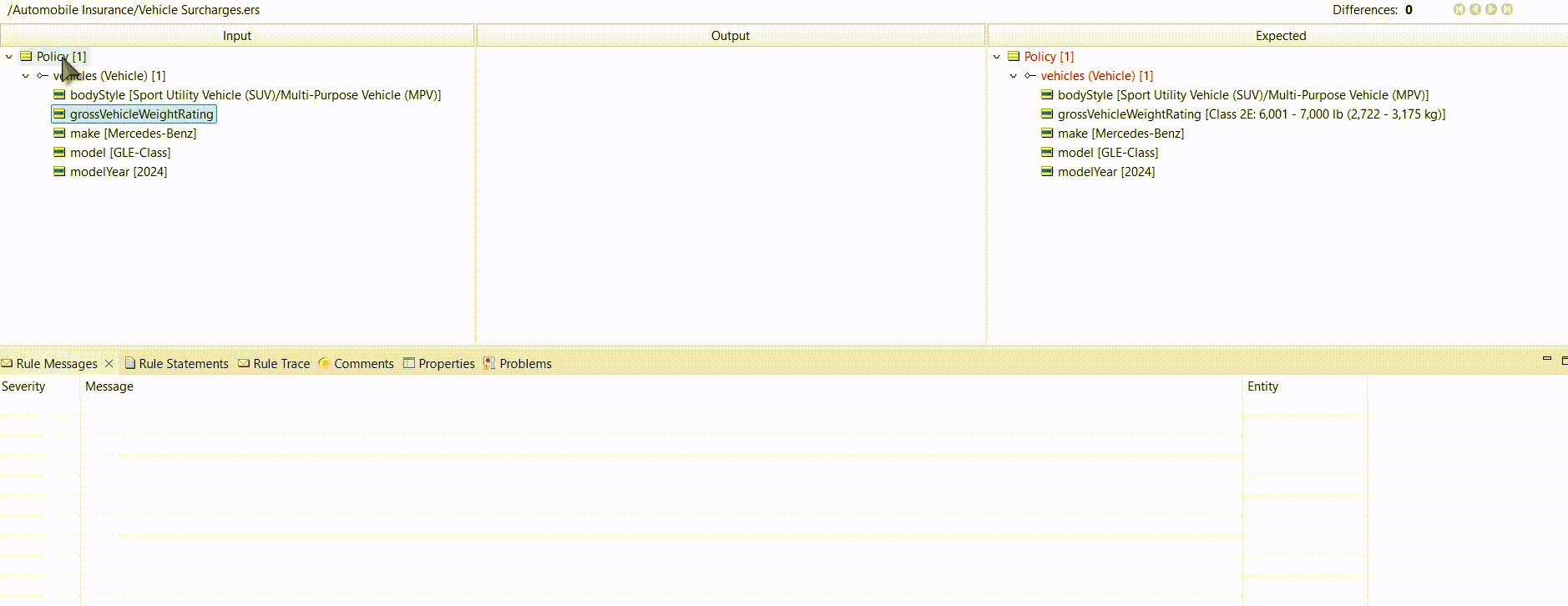Harnessing Data Gravity: Bringing Decision Intelligence to Your Data with the Corticon.js Solution and the MarkLogic Platform
Integrating the Progress Corticon.js solution and MarkLogic platform can bring decision intelligence directly to your data, enabling high-performance, transparent and explainable automation of complex decisions across various industries.
Modern enterprises face the challenge of data gravity—as datasets grow, they become increasingly difficult and costly to move. Decision automation amplifies this challenge: Applying complex business rules across large data volumes often introduces latency and infrastructure overhead. The optimal solution is to bring decision intelligence directly to the data source.
The integration of the Progress Corticon.js solution and MarkLogic platform delivers a high-performance, transparent and explainable framework for automating complex decisions across diverse industries. This blog outlines the end-to-end process, following a car insurance policy underwriting scenario. These examples serve solely as illustrations to demonstrate the workflow and architecture; the concepts apply broadly to any domain where complex decisions must be automated against large datasets.
1. Authoring the Decision Logic in Corticon.js Studio
The first step is to capture the business logic in a clear and manageable format. This is done in Corticon.js Studio, a tool that allows business analysts and rule authors to define, test and document the rules that govern the decision-making process.
Vocabulary Development
A data model, or rule vocabulary, defines business entities and attributes. Vocabularies can be generated directly from existing schemas or structured data messages, like this:
 →
→
Schema validation upholds conformance to established data standards through the Corticon AI Assistant.

Rulesheets
Business rules are authored in a spreadsheet-like interface, allowing complex conditional logic to be expressed intuitively by rule modelers.

Or with the help of the Corticon AI Assistant:

Ruleflows
A graphical execution diagram defines rule sequencing, guaranteeing predictable outcomes in every decision process.
Ruletests
Integrated testing tools validate logic against representative data samples before deployment.

Once finalized, the complete rule project compiles into a single, portable JavaScript file—decisionServiceBundle.js—that executes in any JavaScript-compatible environment, including the MarkLogic platform.
2. The MarkLogic Data Hub Backend
Data gravity increases cost and delay whenever pipelines shuttle records between systems. The MarkLogic backend counters that constraint by collocating Corticon.js decision execution with the source data. Evaluations run inside the data hub, which accelerates throughput, preserves lineage and eliminates round-trip movement.
Ingestion and Processing
The MarkLogic Flux application manages ingestion workflows for structured or semi-structured data.
Automated Evaluation
A MarkLogic Trigger feature activates upon document ingestion, executing a script that:
Reads the new data record.
Invokes the Corticon.js decision service (decisionServiceBundle.js) for evaluation.
Receives an enriched response containing final decisions, human-readable messages and a granular execution trace.
Embeds the response into the source document, forming a complete audit trail.
Stores the enriched document in a permanent MarkLogic collection.
The result is a single source of truth where raw data, automated decisions and explainability metadata coexist.
3. The Explainability Dashboard (Frontend)
A react-based dashboard provides a comprehensive visualization of decisions generated within the MarkLogic platform. The user interface emphasizes interpretability and auditability.
Policy Details
Displays the complete policy context after all rules have been applied.
Decision Log
Presents the human-readable messages generated by the Corticon.js solution, forming a step-by-step narrative of the decision process.
Execution Trace
Visualizes granular metrics data, including attribute changes, entity creation and associations executed during rule processing.

AI in the Loop: Policy Explanation via Chatbot
The integration of the Corticon.js solution, MarkLogic platform and LLM-based chat interfaces introduces an AI-in-the-loop framework for policy explanation.
The chatbot applies Retrieval-Augmented Generation (RAG) to maintain accuracy and traceability by:
Retrieving relevant policy documents from the MarkLogic platform.
Supplying the language model with structured data, Corticon-generated messages and execution traces.
Generating authoritative, contextually grounded responses.

The LLM serves as an interpreter—not a decision-maker—ensuring factual, rule-driven explanations without hallucination risk.
Extending the Paradigm Across Industries
The combination of these two powerful Progress solutions addresses a universal enterprise challenge: applying deterministic, explainable decision logic directly within large, distributed data environments. The car insurance example illustrates the architecture, but the same design pattern applies across many sectors where data gravity and compliance demands constrain analytics and automation.
Key sectors wherein database decisioning delivers immediate value include:
Financial Services – Enables real-time risk evaluation, fraud detection and compliance validation without transferring sensitive data across systems.
Healthcare and Life Sciences – Supports eligibility determination, clinical decision support and benefits administration, while maintaining data security and regulatory compliance.
Public Sector and Social Programs – Automates eligibility, claims and case management decisions in Medicaid, unemployment insurance and similar programs governed by complex regulatory frameworks.
Manufacturing and Industrial IoT – Executes predictive maintenance and quality control decisions close to the data source, reducing latency and optimizing resource usage.
Retail and Consumer Services – Powers dynamic pricing, product recommendations and inventory management through localized decision hubs operating near transactional data.
Energy and Utilities – Manages load balancing, equipment health and sustainability reporting by applying rule-based automation within operational data hubs.
Across these domains, co-locating decision intelligence with the data maximizes transparency, performance and governance—without compromising speed or control.
The Power of Data Gravity
Integrating decision automation within the data hub produces measurable advantages:
Transparency: Every decision includes an auditable rationale embedded in the data.
Efficiency: Data remains stationary, eliminating transfer latency and infrastructure costs.
Consistency: Decisions and data coexist in the same repository, maintaining alignment across systems.
The Progress Corticon.js–MarkLogic architecture exemplifies the data gravity principle in action—enabling intelligent, explainable and high-performance automation directly within the data ecosystem.
Connect with our team for a live demonstration and a tailored overview of how the Corticon.js solution and MarkLogic platform can work in tandem to bring decision intelligence directly to your data.

